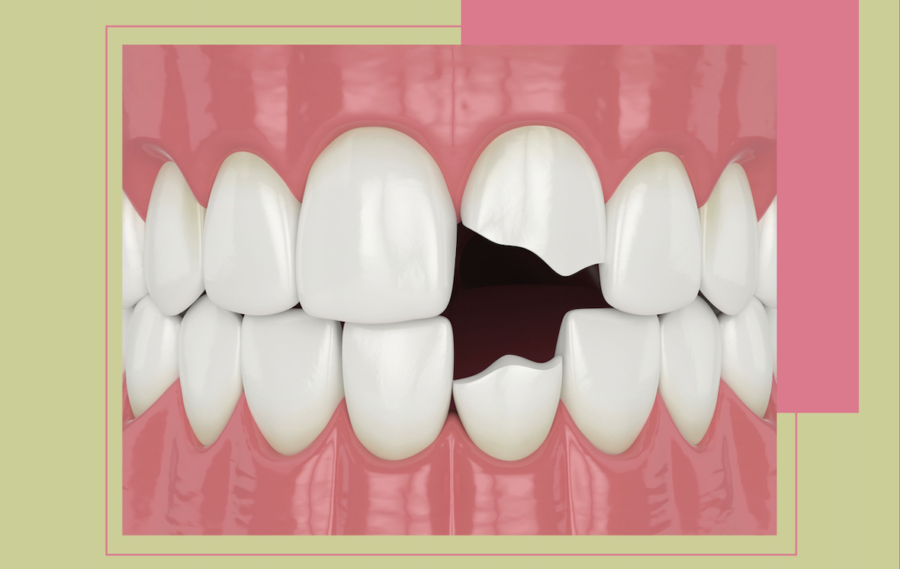What comes to your mind when you read these words broken or chipped tooth? Somehow make us cringe. However, we are here to bring you the lesser known theory about dealing with broken tooth. There are different types of tooth breakages, with the most common being a fractured or chipped tooth. Did you know that there is another way of dealing with a broken tooth without having to undergo implants? Yes, that’s right. You can opt for what is called as a SAPTeeth. But let’s have a closer look at both the options!
If your tooth is broken, chipped, or fractured, see your dentist as soon as possible. Otherwise, your tooth could be damaged further or become infected, possibly causing you to end up losing the tooth.
What is a Broken or Chipped Tooth?
A tooth fracture or a chipped tooth is a trauma that needs urgent attention. A cracked tooth can be caused due to several reasons such as a fall, a sports injury, biting down on a hard substance, chewing tobacco, grinding your teeth and so on. The most common areas where a cracked tooth is likely to occur are the front teeth, the back teeth or the molars.

Cracked teeth are extremely painful and may cause an infection, if not treated immediately. A cracked tooth may or may not show any signs of a breakage on the outside. It could be on the inside of the tooth that is not visible from outside. Cracked teeth could be treated on an outpatient basis. The dentist may apply a splint to the tooth to keep it in place or may prescribe antibiotics to prevent infection. Cracked teeth may get treated with a filling, crown or even a surgical procedure depending on the extent of damage.
One may need an Implant for a chipped tooth
A dental implant is primarily used to replace a missing tooth, but it can also be recommended for a broken one. In certain cases your dentist may recommend for an implant instead of a fixed bridge. The reason being incase the fracture has caused damage to the tooth structure, supports are required. Posts or implant act as that support. Most modern dental practices have the in-house facility for designing and fabricating dental crowns.
Bridge as an Option for a Broken Tooth
A dental bridge is made of SAPTeeth dental crowns. Such a bridge is applied to the two adjacent teeth on both sides of the broken tooth. A dental crown is applied to the broken tooth along with a false tooth on each side of the broken tooth. Such a dental bridge is supported by the two adjacent teeth and not the broken tooth. It is not the best solution for a broken tooth because it is not a long-term solution. After a few years, the two adjacent teeth will start to show signs of damage and some other dental problems. Also, the broken tooth will not be getting any blood supply at all; hence, it will be shrinking in size. A dental bridge is a quick fix for a broken tooth until you get an implant to sustain a new tooth.

Pros of Fixed Bridge over Implant
Easy to apply: A dental bridge is easier to apply than an implant. An implant has to be placed in the jawbone for sustainability, which involves the process of bone grafting.
Less expensive: Fixing a dental bridge is far cheaper than getting an implant.
No need for a long healing period: A dental bridge can be applied as soon as the teeth are prepared. An implant, on the other hand, has to be placed in the jawbone and has to heal completely before a new tooth can be fixed over it.
No need for a long-term antibiotic: A dental bridge does not require long-term antibiotics to prevent infection. – No risk of rejection: A dental bridge is less likely to get rejected as compared to an implant.

Pros of Implant for chipped tooth over Bridge
More sustainable: A dental bridge is not as sustainable as an implant. Once the adjacent teeth are damaged, a new dental bridge has to be fixed again. Whereas, if an implant sustains damage, it can be easily replaced with a new one.
Mush more aesthetic: A dental bridge is not as aesthetic as an implant. The false tooth in a dental bridge does not look as attractive as the real one.
Very strong and rock solid: A dental bridge is not as strong as an implant. The false tooth in a dental bridge is less likely to withstand the pressure of chewing as compared to a real tooth.
Almost like natural teeth: A dental bridge is not as natural as an implant. The false tooth in a dental bridge does not feel as natural as a real tooth.
Conclusion
A fixed bridge is not the best solution for a broken tooth. A dental implant is the best solution for a broken tooth, as it is more sustainable and aesthetic option, and requires less healing time. A dental implant is a better choice in terms of aesthetics, strength, and most importantly, sustainability. However, getting an implant for a broken tooth is a bit more complicated than simply fixing the dental bridge. This is because the implant has to be placed in the jawbone, so that it can sustain the new tooth. There are different types of tooth breakages, with the most common being a fractured or cracked tooth.
Follow Us For More Updates






that is nice royal dental clinic